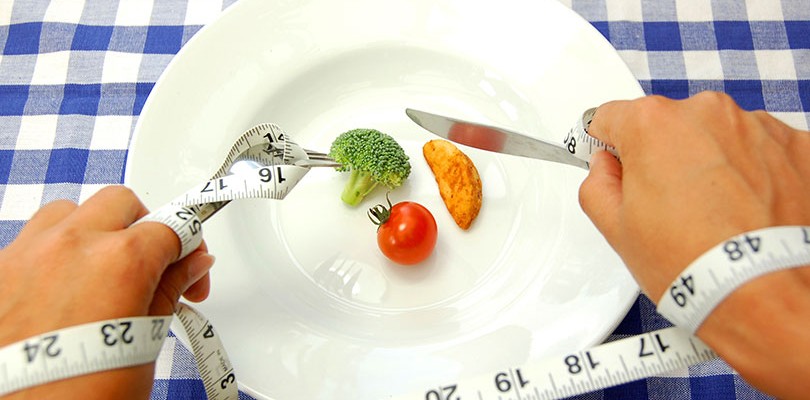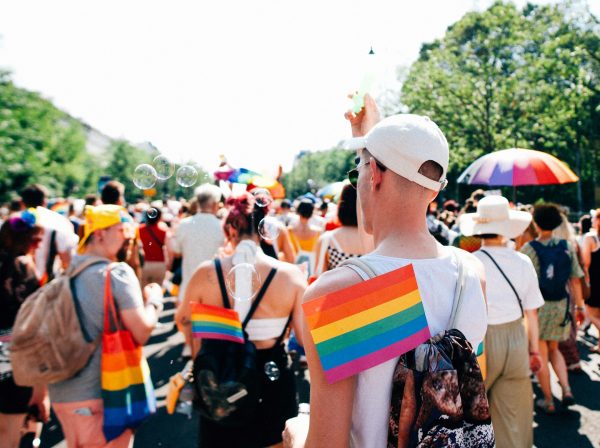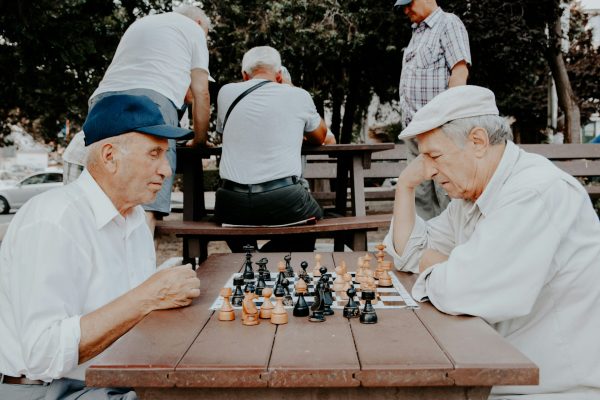While I am very passionate about the LGBTQIA+ Community, I also enjoy the body positivity movement–and discussing the intersections between the two. In honor of National Eating Disorder Awareness Week, I looked at eating disorders within the LGBTQIA+ Community. While there is little research done on the subject, I decided to take the perspectives from the book Feminist Perspectives on Eating Disorders. Even though they are not contemporary, I think they bring up very good points that I’m giving my input on from through a contemporary lens.
“…compulsory heterosexuality and lesbian identity are invisible as analytical categories in feminist research on eating problems; this makes it hard to see the possible implication of heterosexism in a young lesbian’s eating patterns. This absence makes it difficult to gauge the influence of compulsory heterosexuality on heterosexual women’s ideas about appetite and size as well.” (359)
I saw this same problem when I studied queer people with disabilities: scholarly sources openly admitting to the fact that there is not much research done on the topic. I think the intersections between LGBTQIA+ identities and eating disorders/body image is so important; it’s disturbing to see that research is hard to find. I also thought it was very interesting that the book uses the term “compulsory heterosexuality.” I guess referring to non-LGBTIA+ identities are necessary.
“Some relatives fed boys more than girls, because of their belief that girls must be thin to attract boys…Pressures to diet were accompanied by warnings that fat girls become old maids. Women who linked heterosexism directly to their eating problems were those who knew that they were lesbians from an early age and who actively resisted heterosexual norms.” (370)
This section in the book is entitled heterosexism. This is the system of oppression that assumes heterosexuality is inherently normal and superior, whereby negating LGBTQIA+ people’s lives and relationships. I think the last part of this is rationalizing that lesbians have eating problems because they were told they needed to be thin, but went against it, which may lead to disorders like binge eating. Feminist Perspectives on Eating Disorders explores the topic:
“‘I touched myself with food because you can’t touch me because I am queer and I am not getting touched. It begins to be self-fulfilling'”…”Bingeing became her method of exerting some control, of calming herself, and of rebelling against gender and cultural expectations that contradicted her emerging identity.” (371)
I think this story is so sad. It really shows how isolated LGBTQIA+ folks can feel and how it can have a major impact on the way they see themselves. I do think, though (that since this book was written, in 1994) we’ve come far with resources and communities that LGBTQIA+ individuals are feeling more confident about themselves. Or that they at least have resources for when they are struggling.
“Since many lesbians reject patriarchal beauty standards and traditional sex roles for women, two of the most important sociocultural factors in the etiology of eating disorders, it has been hypothesized that they would be less likely to develop eating disorders. However, few empirical data are available on eating disorder rates among lesbians.” (425)
I’m guessing because this book was a feminist perspective, it looks mainly at women’s and lesbians’ experiences. However, it is still thought-provoking. The critical point is that few perspectives have been gathered. As I mentioned in this post, lesbians tend to try and go against beauty standards and what is “expected” to adhere to the male gaze, etc., so they may not struggle as much.
Now let’s jump to more recent studies; namely a 2007 study which concluded that there was not a higher eating disorder rate in LGBTQ women than heterosexual women. But there was a significantly higher risk for gay and bisexual men than heterosexual men. In numbers, it’s 15% for gay men and 5% for heterosexuals.
And the Transgender Community? In a 2012 study, a sample of 11 female-to-male and nine male-to-female transgender Finnish adults were interviewed. Regarding eating disorders: 70% reported current or previous disordered eating, 25% reported binge eating and another disclosed 25% purging. Participants said this was a result of their body not conforming to their transitioning gender.
Sources:
Feminist Perspectives on Eating Disorders by Patricia Fallon (1994)
https://www.nationaleatingdisorders.org/eating-disorders-lgbt-populations
http://www.ncbi.nlm.nih.gov/pmc/articles/PMC2080655/






